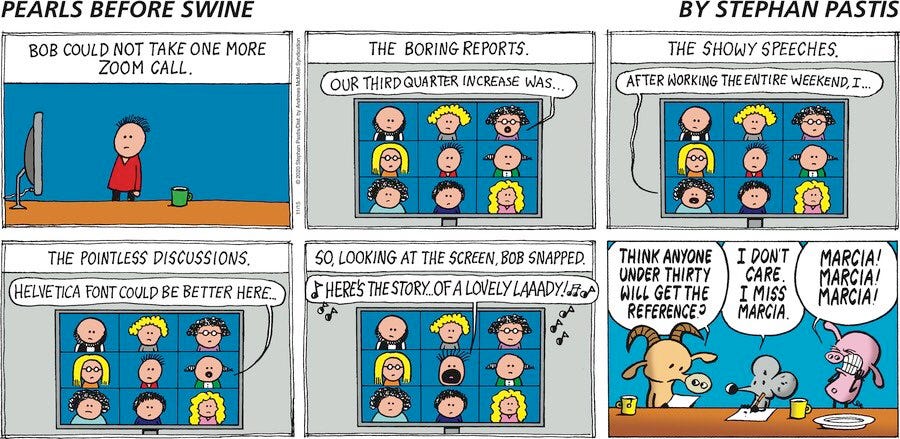Tales from the jar side: Kotlin Cookbook in Russian, A few chess comments, and Twitter Memes
No politics at all this week, because I've had enough and you probably have too
Welcome to Tales from the jar side, the Kousen IT newsletter, for the week of November 8 - 15, 2020. This week I taught a private course on Kotlin for Android Developers, an O’Reilly course on Functional Java, and spent a day giving talks at the final No Fluff, Just Stuff Virtual Tour stop of the year.
Kotlin. Collection of Recipes
I forgot to mention this last week, but my editor at O’Reilly informed me that my Kotlin Cookbook is apparently available in Russian:
Huh. That title doesn’t quite seem to match (according to Google Translate, the words “Kotlin Cookbook” become Котлинская поваренная книга, so oookay), and that’s certainly the first time I’ve seen my name appear in Cyrillic. When I clicked the translate button in the browser it changed the title to Kotlin. Collection of Recipes, a reasonable interpretation. The “Author” field becomes “Cousin K.” which is actually more accurate than I expected. Also according to Google, 799 rubles is about $10.33, which sounds like a good price. I hate to think what the shipping charges would be, however.
So all in all, cool (or should I say прохладно?). Presumably they’ll send me one, so I can add it to my French and Korean copies.
Fluffy Stuff, Or Lack Thereof
I spent all day Friday in the last No Fluff, Just Stuff Virtual Tour event of the year. We use Zoom on the tour, which works out pretty well. I wish Stephan Pastis has published this cartoon before Friday, however, so I could have used it during my talks:
You think that’s a dated reference? How about “Paul Lynde, center square, to block”?
Maybe next time. Speaking of Zoom jokes, I loved this one:
That’s right, a Yentl joke. Do you know that movie came out in 1983? I saw it in the theater, was very disappointed in the plot and the music, and haven’t seen it since. Yet I got that joke on the first try.
At the conference, my talks were:
Latest Java Best Practices — went well, though I ran a bit long.
Key Gradle Concepts — I have new Gradle materials to go through for this coming week, but I didn’t get into any of that.
Java Testing with JUnit 5 and Mockito (parts 1 and 2) — the first part was all JUnit 5, the last part was all Mockito. Worked out pretty well, but I think that was asking a lot of the attendees when the last talk went from 5 PM to 6:30 PM (EST) on a Friday.
A good time was had by all (I think), except for that poor guy with his camera on who I watched actually fall asleep during my second to last talk. I tried not to take it personally. To be completely honest, I sympathized. The talks were all awesome, of course, as far as you know.
Mental Bookmarks
This week I’ll be speaking at the GIDS 2020 conference designed for “leaders”. One of my talks is called Mental Bookmarks and the Fractal Nature of Success. The tweet about it from the organizers looks like this:


I had to process that description for a moment before I recognized the talk, but it’s true enough. The mental bookmarks part is about the technique of retracing a discussion in real time to get back to a previous step, and how useful that can be. The rest is about false vs real measures of success, like twitter follower counts (I’m currently at 4625, not that I’m counting; I don’t have to — Twitter does it for me).
More about false measures of success below. In the meantime, I’ll just say that I’m giving this talk on Tuesday, at 6 AM EST (yikes, but the conference is hosted in India, so time zones are a thing). If you wind up attending, first, my condolences at the hour, and second, be sure to say hi.
Tuesday is going to be another one of those crazy days for me. I’m giving this talk before dawn, then in the afternoon I have day one of my Introduction to Gradle course, and then from 7 PM to 10 or 11 PM I’m giving my workshop called Beyond Managing Your Manager at the same conference.
I was hoping to have at least the beta version of my Managing Your Manager book ready in time for this conference, but sadly that’s not happening. It’s coming soon, though. I promise.
Fathers, Sons, and Chess
Last week I mentioned that I watched all the episodes of The Queen’s Gambit on Netflix, and that I really enjoyed it. That’s true. But I have to admit, the series churned up many more emotions than I realized at first. Partly that’s because of my long history with the game, but mostly it’s because of how tightly my experiences are bound to my father.
(Don’t worry. I’m not going to dwell on that too much here. First, I don’t want this newsletter to turn into a book, and second, it’s entirely possible I’m spending so much time on it to avoid having to write what I’m supposed to be writing. Still, I thought I’d include a few notes.)
My first encounter with chess came when I was about eight years old. My father played, of course. He was intelligent and ambitious, with a bold style that actively sought out confrontation. He also had an obsessive nature that meant he immersed himself completely in any subject he decided to pursue. That meant there were many chess books lying around the house, along with several chess sets. He didn’t play often, but he was intense when he did.
These were the years corresponding to the rise of Bobby Fischer, whose pursuit of the World Championship against the Russians was the first time chess broke through into the popular media. As a kid who was always one of the brightest in my class, I felt obligated to learn the game. Besides, Spock was a good chess player, and I watched Star Trek in syndication all the time, too.
I improved fairly rapidly and eventually my father and I became relative equals. I founded the chess club in my high school, which probably tells you everything you need to know. I also arranged for a few competitive matches to be played against other schools, and even managed to get a tiny item about them in our local newspaper, a fact that still makes me shudder in retrospect.
Realistically, my peak was at about the level of an adequate club player. My US Chess Federation rating topped out at about 1500. I haven’t played competitively in literally decades, but I still enjoy watching the game when played by the greats.
(Now that I think about it, that’s pretty much how I feel about football and baseball, too.)
My father and I continued playing, off and on, until I moved to Connecticut. Then it didn’t happen much. After he got sick and started radiation and chemo treatments, those times got fewer still. The last time we played was when he was in his last few months before the end. My niece wanted to play, and after that my Dad and I played one last game.
He didn’t play like himself at all. All the energy and boldness was gone. He almost played scared. I hated it. We stopped after that. I think we both knew how much we both had changed, and we were okay with it. Neither of us needed to prove anything to the other, and were content to just hang out and chat.
He would have liked the Netflix series, however.
In case you didn’t know, the Queen’s Gambit itself is an opening, and it isn’t a gambit at all. A gambit is when you give away material — usually a pawn — in order to get rapid development, or extra space, or some other advantage that may lead to a quick win. My Dad liked them, naturally enough, and I didn’t. The Queen’s Gambit is 1. d4 d5 2. c4, seeming to offer up the c-pawn, but even if it’s taken (known as the Queen’s Gambit Accepted), it’s generally easy enough to win the pawn back. More often it’s not taken, known as the Queen’s Gambit Declined, which was my opening of choice.
Like so many things in my life, I feel that has some deeper meaning, but I have no idea what.
The rise of the Netflix series has had one additional very nice side-effect: people are re-discovering Judit Polgar, who is generally acknowledged as the best woman player of all time. A true prodigy, she became the youngest ever Grandmaster at age 15, breaking the record of Bobby Fischer, of all people. She is the only woman to have been ranked in the Top Ten rated players in the world, reaching number 8 in 2005. She was the top ranked women’s player from 1989 until her retirement from active play in 2014.
The part that surprises me, though, is she’s been retired since 2014, and yet she’s only 44 years old. Heck, I didn’t find my dream job until I was 38.
(Oh, and for the record, the reigning World Champion, Magnus Carlsen, has held the title since 2013 and doesn’t turn 30 until the end of this month. Whippersnappers. Get off my lawn!)
Polgar still does commentary for live online tournaments from time to time, and is always a pleasure to listen to, partly because her flair for tactics is as strong as ever. She sees dazzling possibilities on the board, and enjoys telling everyone about them.
Unlike Beth Harmon, Polgar is warm and friendly on camera, with a ready smile. She’s a pleasure to watch and to learn from. Be sure to catch her if you get the opportunity.
Memes and Viral Tweets
This apparently was my week to participate in Twitter memes. My friend Dan Vega posted this one:
My response included this image:
That is, of course, the brilliant Vincent D’Onofrio, playing the bug in the Edgar suit in Men in Black. When I sell the movie rights to my Managing Your Manager book, I want him to play me in the movie.
(And by “him” I mean the bug in the Edgar suit. I’m sure we’d never be able to afford Mr. D’Onofrio.)
Another meme that went around this week on Twitter was this one:
Believe it or not, nobody made the Java == Coffee pun, but I guess we in the Java community are too used to that by now. The replies among my friends went back and forth a bit, and finally reached this stage:


That’s when I felt I had to jump in:

For the record, I learned to drink my coffee black when I got tired of running out of sweetener. I then realized (1) coffee had an actual taste and (2) it was often way too bitter for me, so I started going for medium blends rather than dark. The coffee I had in Europe was almost always way better, but technically that’s probably what we would call espresso.
I’m not really a coffee aficionado, however. Frankly, if I could take my caffeine intravenously (especially in the morning), I would be happy with that, and my stomach would no doubt be even happier.
This wasn’t on Twitter, but another friend (Hi Greg! Are you trying to tell me something?) decided to share this YouTube video with me:
Against my better judgement, I watched it. I say against because I didn’t want to get caught up in yet another false measure of success.
(Remember when I used that phrase near the top of this newsletter? That’s what mental bookmarks are all about.)
Still, I do write this newsletter hoping that people will actually read it, so I figured I listen to what he (David Gaughran) had to say.
He focused on gmail, how to keep your newsletter not only out of the spam folder, but how to avoid the “Social” and “Promotions” tabs. He talked about limiting links and images (which I can’t do — that’s a key part of this newsletter), and boosting your open rate.
As you’re probably aware, I use Substack for this newsletter, and it’s completely free. That’s why Substack claims I have zero subscribers: they reserve the word subscriber for paid accounts. Instead I have a “Total Email List” of 916 people.
(If and when I break 1000, you’ll hear about it in this newsletter.)
The open rate is shown on each newsletter, but I have to click on them individually to see it. It seems to fluctuate between 30% and 40%, with most around 35%. I have no idea if that’s good or bad, though it seems okay. Gaughran suggests trimming your list of subscribers (he calls it “culling the herd”) by removing people who are not active, warning them ahead of time, but if they don’t respond, deleting the address. That would (possibly) boost my open rate, but it would also make the overall list total go down. The idea is that the open rate factors into the spam calculation made by Google when distributing it.
In the end, I decided his recommendations sounded like a lot of actual work, and that’s not what this newsletter is all about, so I didn’t change anything.
Actual News About The Book
I got some good news this week. Last week I asked a friend to write the foreword for my Managing Your Manager book and he said he’d think about it. I prepared this image just in case he said no:
This week he sent me a preliminary version of what he planned to write, and it was beautiful. Honestly, now I have to work hard to finish the book just so I can share the foreword with you.
The only downside is I couldn’t use that meme on him, which is probably just as well. So here is a variation on the same theme:
Now you have to read it, right? Good thing you’re at the end.
Last week:
Kotlin for Android Developers, private class
Functional Java, on the O’Reilly Learning Platform
NFJS Virtual Tour Stop #3
This week:
Introduction to Gradle, for Gradle, Inc
A talk and a workshop at GIDS Live 2000
Reactive Spring, on the O’Reilly Learning Platform
Kotlin and Spring, ditto














